Features
A CHEF IN SINGAPORE & A TOURIST IN MALAYSIA – Part 54
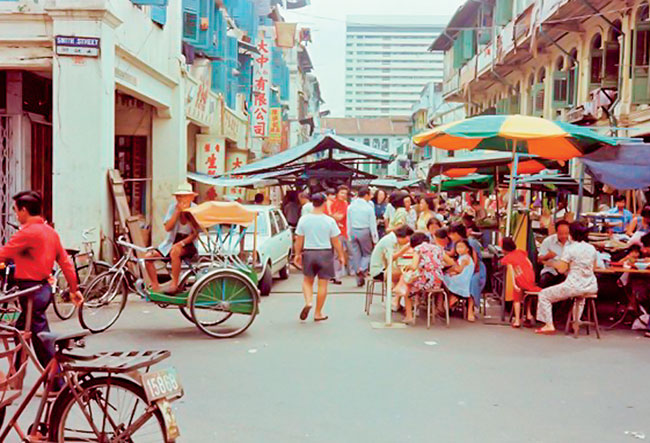
CONFESSIONS OF A GLOBAL GYPSY
By Dr. Chandana (Chandi) Jayawardena DPhil
President – Chandi J. Associates Inc. Consulting, Canada
Founder & Administrator – Global Hospitality Forum
chandij@sympatico.ca
A Team of Chefs for Singapore
Soon after I was introduced to Mr. Anthony Lee, the Food and Beverage Manager of the Goodwood Park Hotel in Singapore by Mrs. Pearl Heentigala, Principal/Director of Ceylon Hotel School (CHS), I became very busy. I quickly commenced planning for a large-scale Sri Lankan food festival in Singapore. I was named the Guest Executive Chef for the five-day (10 lunch and dinner buffets) festival in 1982.
My two deputies were Culinary Lecturers of CHS – Chef Marie Nugapitiya and Chef Gihan Wijesinghe. As Marie had previously worked on my team at Havelock Tourinn as a Chef eight years ago, I knew her well. I met Gihan, who had returned to Sri Lanka after being trained as a Chef in the UK, only a few months ago but we already had become friends. Both of them fully supported my vision for the food festival.
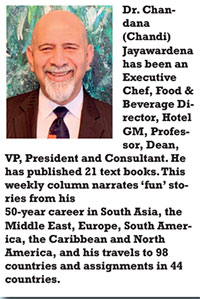
Partnerships for a Festival in Singapore
The festival was themed, ‘The Magic of Sri Lanka’. It was a major festival of Sri Lankan food, art, crafts, masks, dances, music, and tea. Representatives of the four key partners of the festival, Sri Lanka High Commission in Singapore, Ceylon Tourist Board, UTA French Airlines and the Goodwood Park Hotel gave me complete control to plan 10 elaborate menus. We included 60 dishes for the opening gala event for 300 diners. Other nine buffet products included 32 dishes from a rotating menu. Three of us were referred as ‘Master Native Chefs’!
Around 30 people travelled for the festival from Sri Lanka to Singapore. They included dance and music performers, mask carvers, tea hosts, trade representatives and the three chefs. I was successful in negotiating with the organizers to include my wife as a special host for the festival. As she was a popular model, I did not have problems in convincing them.
As a gesture of goodwill, the President of Sri Lanka, J. R. Jayewardene had offered his friend, Prime Minister of Singapore, Lee Kuan Yew, a baby elephant named Trishka. He was airlifted in our Colombo-Singapore flight in the cargo section and the mahout sat with us in economy class. Trishka was the popular star of the festival for five days before he was moved to his new permanent home, the Singapore Zoo.
We were very pleased with the warm welcome and the old-world charm of Goodwood Park Hotel. Today, this 233-room hotel, built in the year 1900, is a national monument of Singapore, just like its rival, Raffles Hotel built in 1887. We were guests at Goodwood Park Hotel for two weeks and it reminded us of the two famous 19th century hotels in Sri Lanka with great characteristics – Galle Face and Mount Lavinia.
While staying at the Goodwood Park Hotel during our week of advance preparations for the food festival, we visited all five restaurants of the hotel. They maintained very high standards. We trained a Singaporean team of three cooks and three porters, who were tasked by the Executive Chef of the hotel to assist us. Soon they mastered preparations such as hoppers, string hoppers, pittu and roti, but still needed regular supervision. After long days of work, we went for discovery walks starting from the famous Scotts Road where the hotel was located. Orchard Road was my favourite.
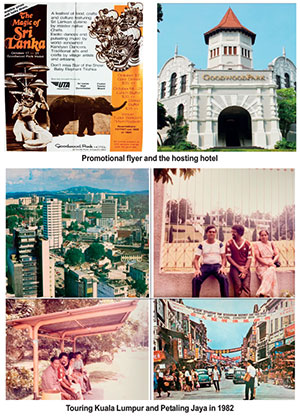
Singapore in 1982
In 1982, Singapore was not ultra-advanced like it is now, but was progressing faster than any other country in Asia. Singapore’s history dates back a millennium, having been a maritime emporium known as Temasek and subsequently a part of several successive thalassocratic empires. Its colonial era began in 1819 when Stamford Raffles established Singapore as a trading post of the British Empire. During the Second World War, Singapore was occupied by Japan in 1942, and returned to British control as a separate crown colony following Japan’s surrender in 1945.
Singapore gained self-governance in 1959 and in 1963, became part of the new federation of Malaysia. In 1965, Singapore was expelled from the federation and became a separate, independent country. The visionary leader Lee Kuan Yew as the first Prime Minister of Singapore did an outstanding job in nation building. Seventeen years later, many countries were looking at Singapore to learn from an unprecedented success story. Singapore already had become established as the least-corrupt, fastest-growing and most pro-business country with the most-educated population in the world. In 1982, the population of Singapore was 2.6 million, which had increased over double in 40 years, to 5.5 million in 2022.
Festival Success
The food festival was a big success in terms of attendance, customer satisfaction and publicity. Marie and Gihan looked after the desserts, rice dishes and accompaniments. I prepared all meat, chicken and fish dishes, in addition to general coordination and buffet decorations. The 30 feet long batik buffet table cover we carried from Sri Lanka enhanced the presentation. The baby elephant Trishka created a unique and popular first impression.
Egg hoppers become the most popular item during the festival. That unexpected demand created a bottle neck situation at the buffet on the first day. After that, we increased the number of cookers to make hoppers at the buffet table and quickly trained a group of waiters to make egg hoppers. That solved the problem.
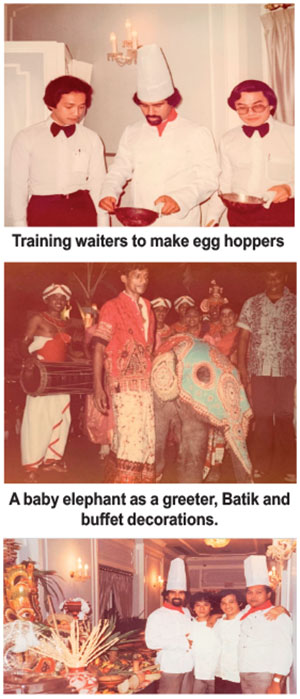
Extending the Stay
After the festival, we spent a few days with CHS friends, Kamal and Preethi Hapuwatte, who were living in Singapore at that time. We were also invited to various events and dinners by the Sri Lankan High Commissioner and others. They were impressed with our cooking at the festival, and therefore, were a little nervous to entertain us. Although we planned to return to Sri Lanka after a period of two weeks, I had a different idea. I convinced Marie and Gihan to travel overland to the capital city of Malaysia. They agreed to come, if I could arrange one week of special vacation from CHS.
When I contacted Mrs. Heentigala with the special request, I was pleasantly surprised. She said, “Chandana, based on the very positive feedback I have received, I am convinced that the three of you worked very hard to make this festival a great success. I am very proud of you. Of course, you have earned an extra week of vacation. Enjoy Malaysia!” So, the next day we took a train to Kuala Lumpur (KL). Trains between Singapore and KL were not that fast like now. We took around six hours for the trip and enjoyed the beautiful scenery, in between.
Malaysia in 1982
Malaysia occupies parts of the Malay Peninsula and the island of Borneo. It is known for its beaches, rainforests and tourism. The country is multi-ethnic and multi-cultural, which has a significant effect on its politics. A little over half of the population were ethnically Malay, with minorities of Chinese, Indian, and indigenous peoples.
Malaysia has its origins in the Malay kingdoms which, from the 18th century, became subject to the British Empire and eventually achieved independence in 1957. The independent Malaya united with the then British crown colonies of North Borneo, Sarawak, and Singapore in 1963 to become Malaysia. Singapore was in this federation only for two years. In 1982 the population of Malaysia was 14 million, which has grown by 130% in 40 years making it the 44th most populous county in the world. Malaysia’s population in 2022 is nearly 33 million.
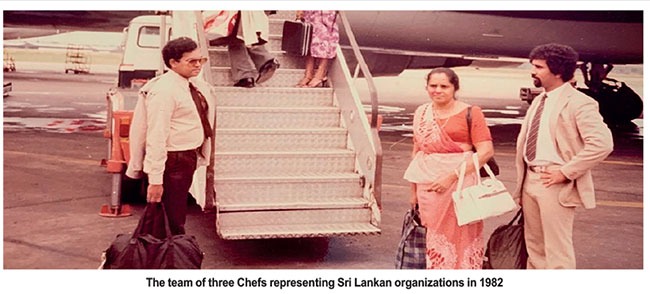
The capital, KL had first developed around 1857 as a town serving the tin mines of the region. KL is home to colonial buildings and busy shopping districts, which were the main attractions for the two ladies in our small group. Gihan and I convinced the ladies to join us on a couple of half day tours. KL serves as the cultural, financial and economic centre of Malaysia. It is also home to the Parliament of Malaysia and the Istana Negara, the official residence of the Yang di-Pertuan Agong (monarch of Malaysia).
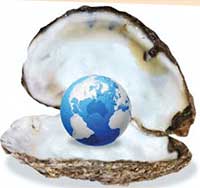
As tourists we found KL to be very interesting, but when we found less expensive accommodation with a family in the suburbs of KL, we moved to Petaling Jaya (PJ), a city in Petaling District. There, we blended in well with the locals. We used buses and walked freely in the local neighbourhoods. Hardly anyone noticed us as tourists. I liked that experience, as most tourists do not get such opportunities.
Our return trip to Singapore was equally enjoyable. We spent one final day with our friends in Singapore before taking our return flight to Colombo. The three weeks we spent in Singapore and Malaysia in 1982 were memorable and different in many aspects from our previous overseas travels.
Features
The heart-friendly health minister

by Dr Gotabhya Ranasinghe
Senior Consultant Cardiologist
National Hospital Sri Lanka
When we sought a meeting with Hon Dr. Ramesh Pathirana, Minister of Health, he graciously cleared his busy schedule to accommodate us. Renowned for his attentive listening and deep understanding, Minister Pathirana is dedicated to advancing the health sector. His openness and transparency exemplify the qualities of an exemplary politician and minister.
Dr. Palitha Mahipala, the current Health Secretary, demonstrates both commendable enthusiasm and unwavering support. This combination of attributes makes him a highly compatible colleague for the esteemed Minister of Health.
Our discussion centered on a project that has been in the works for the past 30 years, one that no other minister had managed to advance.
Minister Pathirana, however, recognized the project’s significance and its potential to revolutionize care for heart patients.
The project involves the construction of a state-of-the-art facility at the premises of the National Hospital Colombo. The project’s location within the premises of the National Hospital underscores its importance and relevance to the healthcare infrastructure of the nation.
This facility will include a cardiology building and a tertiary care center, equipped with the latest technology to handle and treat all types of heart-related conditions and surgeries.
Securing funding was a major milestone for this initiative. Minister Pathirana successfully obtained approval for a $40 billion loan from the Asian Development Bank. With the funding in place, the foundation stone is scheduled to be laid in September this year, and construction will begin in January 2025.
This project guarantees a consistent and uninterrupted supply of stents and related medications for heart patients. As a result, patients will have timely access to essential medical supplies during their treatment and recovery. By securing these critical resources, the project aims to enhance patient outcomes, minimize treatment delays, and maintain the highest standards of cardiac care.
Upon its fruition, this monumental building will serve as a beacon of hope and healing, symbolizing the unwavering dedication to improving patient outcomes and fostering a healthier society.We anticipate a future marked by significant progress and positive outcomes in Sri Lanka’s cardiovascular treatment landscape within the foreseeable timeframe.
Features
A LOVING TRIBUTE TO JESUIT FR. ALOYSIUS PIERIS ON HIS 90th BIRTHDAY

by Fr. Emmanuel Fernando, OMI
Jesuit Fr. Aloysius Pieris (affectionately called Fr. Aloy) celebrated his 90th birthday on April 9, 2024 and I, as the editor of our Oblate Journal, THE MISSIONARY OBLATE had gone to press by that time. Immediately I decided to publish an article, appreciating the untiring selfless services he continues to offer for inter-Faith dialogue, the renewal of the Catholic Church, his concern for the poor and the suffering Sri Lankan masses and to me, the present writer.
It was in 1988, when I was appointed Director of the Oblate Scholastics at Ampitiya by the then Oblate Provincial Fr. Anselm Silva, that I came to know Fr. Aloy more closely. Knowing well his expertise in matters spiritual, theological, Indological and pastoral, and with the collaborative spirit of my companion-formators, our Oblate Scholastics were sent to Tulana, the Research and Encounter Centre, Kelaniya, of which he is the Founder-Director, for ‘exposure-programmes’ on matters spiritual, biblical, theological and pastoral. Some of these dimensions according to my view and that of my companion-formators, were not available at the National Seminary, Ampitiya.
Ever since that time, our Oblate formators/ accompaniers at the Oblate Scholasticate, Ampitiya , have continued to send our Oblate Scholastics to Tulana Centre for deepening their insights and convictions regarding matters needed to serve the people in today’s context. Fr. Aloy also had tried very enthusiastically with the Oblate team headed by Frs. Oswald Firth and Clement Waidyasekara to begin a Theologate, directed by the Religious Congregations in Sri Lanka, for the contextual formation/ accompaniment of their members. It should very well be a desired goal of the Leaders / Provincials of the Religious Congregations.
Besides being a formator/accompanier at the Oblate Scholasticate, I was entrusted also with the task of editing and publishing our Oblate journal, ‘The Missionary Oblate’. To maintain the quality of the journal I continue to depend on Fr. Aloy for his thought-provoking and stimulating articles on Biblical Spirituality, Biblical Theology and Ecclesiology. I am very grateful to him for his generous assistance. Of late, his writings on renewal of the Church, initiated by Pope St. John XX111 and continued by Pope Francis through the Synodal path, published in our Oblate journal, enable our readers to focus their attention also on the needed renewal in the Catholic Church in Sri Lanka. Fr. Aloy appreciated very much the Synodal path adopted by the Jesuit Pope Francis for the renewal of the Church, rooted very much on prayerful discernment. In my Religious and presbyteral life, Fr.Aloy continues to be my spiritual animator / guide and ongoing formator / acccompanier.
Fr. Aloysius Pieris, BA Hons (Lond), LPh (SHC, India), STL (PFT, Naples), PhD (SLU/VC), ThD (Tilburg), D.Ltt (KU), has been one of the eminent Asian theologians well recognized internationally and one who has lectured and held visiting chairs in many universities both in the West and in the East. Many members of Religious Congregations from Asian countries have benefited from his lectures and guidance in the East Asian Pastoral Institute (EAPI) in Manila, Philippines. He had been a Theologian consulted by the Federation of Asian Bishops’ Conferences for many years. During his professorship at the Gregorian University in Rome, he was called to be a member of a special group of advisers on other religions consulted by Pope Paul VI.
Fr. Aloy is the author of more than 30 books and well over 500 Research Papers. Some of his books and articles have been translated and published in several countries. Among those books, one can find the following: 1) The Genesis of an Asian Theology of Liberation (An Autobiographical Excursus on the Art of Theologising in Asia, 2) An Asian Theology of Liberation, 3) Providential Timeliness of Vatican 11 (a long-overdue halt to a scandalous millennium, 4) Give Vatican 11 a chance, 5) Leadership in the Church, 6) Relishing our faith in working for justice (Themes for study and discussion), 7) A Message meant mainly, not exclusively for Jesuits (Background information necessary for helping Francis renew the Church), 8) Lent in Lanka (Reflections and Resolutions, 9) Love meets wisdom (A Christian Experience of Buddhism, 10) Fire and Water 11) God’s Reign for God’s poor, 12) Our Unhiddden Agenda (How we Jesuits work, pray and form our men). He is also the Editor of two journals, Vagdevi, Journal of Religious Reflection and Dialogue, New Series.
Fr. Aloy has a BA in Pali and Sanskrit from the University of London and a Ph.D in Buddhist Philosophy from the University of Sri Lankan, Vidyodaya Campus. On Nov. 23, 2019, he was awarded the prestigious honorary Doctorate of Literature (D.Litt) by the Chancellor of the University of Kelaniya, the Most Venerable Welamitiyawe Dharmakirthi Sri Kusala Dhamma Thera.
Fr. Aloy continues to be a promoter of Gospel values and virtues. Justice as a constitutive dimension of love and social concern for the downtrodden masses are very much noted in his life and work. He had very much appreciated the commitment of the late Fr. Joseph (Joe) Fernando, the National Director of the Social and Economic Centre (SEDEC) for the poor.
In Sri Lanka, a few religious Congregations – the Good Shepherd Sisters, the Christian Brothers, the Marist Brothers and the Oblates – have invited him to animate their members especially during their Provincial Congresses, Chapters and International Conferences. The mainline Christian Churches also have sought his advice and followed his seminars. I, for one, regret very much, that the Sri Lankan authorities of the Catholic Church –today’s Hierarchy—- have not sought Fr.
Aloy’s expertise for the renewal of the Catholic Church in Sri Lanka and thus have not benefited from the immense store of wisdom and insight that he can offer to our local Church while the Sri Lankan bishops who governed the Catholic church in the immediate aftermath of the Second Vatican Council (Edmund Fernando OMI, Anthony de Saram, Leo Nanayakkara OSB, Frank Marcus Fernando, Paul Perera,) visited him and consulted him on many matters. Among the Tamil Bishops, Bishop Rayappu Joseph was keeping close contact with him and Bishop J. Deogupillai hosted him and his team visiting him after the horrible Black July massacre of Tamils.
Features
A fairy tale, success or debacle

Sri Lanka-Singapore Free Trade Agreement
By Gomi Senadhira
senadhiragomi@gmail.com
“You might tell fairy tales, but the progress of a country cannot be achieved through such narratives. A country cannot be developed by making false promises. The country moved backward because of the electoral promises made by political parties throughout time. We have witnessed that the ultimate result of this is the country becoming bankrupt. Unfortunately, many segments of the population have not come to realize this yet.” – President Ranil Wickremesinghe, 2024 Budget speech
Any Sri Lankan would agree with the above words of President Wickremesinghe on the false promises our politicians and officials make and the fairy tales they narrate which bankrupted this country. So, to understand this, let’s look at one such fairy tale with lots of false promises; Ranil Wickremesinghe’s greatest achievement in the area of international trade and investment promotion during the Yahapalana period, Sri Lanka-Singapore Free Trade Agreement (SLSFTA).
It is appropriate and timely to do it now as Finance Minister Wickremesinghe has just presented to parliament a bill on the National Policy on Economic Transformation which includes the establishment of an Office for International Trade and the Sri Lanka Institute of Economics and International Trade.
Was SLSFTA a “Cleverly negotiated Free Trade Agreement” as stated by the (former) Minister of Development Strategies and International Trade Malik Samarawickrama during the Parliamentary Debate on the SLSFTA in July 2018, or a colossal blunder covered up with lies, false promises, and fairy tales? After SLSFTA was signed there were a number of fairy tales published on this agreement by the Ministry of Development Strategies and International, Institute of Policy Studies, and others.
However, for this article, I would like to limit my comments to the speech by Minister Samarawickrama during the Parliamentary Debate, and the two most important areas in the agreement which were covered up with lies, fairy tales, and false promises, namely: revenue loss for Sri Lanka and Investment from Singapore. On the other important area, “Waste products dumping” I do not want to comment here as I have written extensively on the issue.
1. The revenue loss
During the Parliamentary Debate in July 2018, Minister Samarawickrama stated “…. let me reiterate that this FTA with Singapore has been very cleverly negotiated by us…. The liberalisation programme under this FTA has been carefully designed to have the least impact on domestic industry and revenue collection. We have included all revenue sensitive items in the negative list of items which will not be subject to removal of tariff. Therefore, 97.8% revenue from Customs duty is protected. Our tariff liberalisation will take place over a period of 12-15 years! In fact, the revenue earned through tariffs on goods imported from Singapore last year was Rs. 35 billion.
The revenue loss for over the next 15 years due to the FTA is only Rs. 733 million– which when annualised, on average, is just Rs. 51 million. That is just 0.14% per year! So anyone who claims the Singapore FTA causes revenue loss to the Government cannot do basic arithmetic! Mr. Speaker, in conclusion, I call on my fellow members of this House – don’t mislead the public with baseless criticism that is not grounded in facts. Don’t look at petty politics and use these issues for your own political survival.”
I was surprised to read the minister’s speech because an article published in January 2018 in “The Straits Times“, based on information released by the Singaporean Negotiators stated, “…. With the FTA, tariff savings for Singapore exports are estimated to hit $10 million annually“.
As the annual tariff savings (that is the revenue loss for Sri Lanka) calculated by the Singaporean Negotiators, Singaporean $ 10 million (Sri Lankan rupees 1,200 million in 2018) was way above the rupees’ 733 million revenue loss for 15 years estimated by the Sri Lankan negotiators, it was clear to any observer that one of the parties to the agreement had not done the basic arithmetic!
Six years later, according to a report published by “The Morning” newspaper, speaking at the Committee on Public Finance (COPF) on 7th May 2024, Mr Samarawickrama’s chief trade negotiator K.J. Weerasinghehad had admitted “…. that forecasted revenue loss for the Government of Sri Lanka through the Singapore FTA is Rs. 450 million in 2023 and Rs. 1.3 billion in 2024.”
If these numbers are correct, as tariff liberalisation under the SLSFTA has just started, we will pass Rs 2 billion very soon. Then, the question is how Sri Lanka’s trade negotiators made such a colossal blunder. Didn’t they do their basic arithmetic? If they didn’t know how to do basic arithmetic they should have at least done their basic readings. For example, the headline of the article published in The Straits Times in January 2018 was “Singapore, Sri Lanka sign FTA, annual savings of $10m expected”.
Anyway, as Sri Lanka’s chief negotiator reiterated at the COPF meeting that “…. since 99% of the tariffs in Singapore have zero rates of duty, Sri Lanka has agreed on 80% tariff liberalisation over a period of 15 years while expecting Singapore investments to address the imbalance in trade,” let’s turn towards investment.
Investment from Singapore
In July 2018, speaking during the Parliamentary Debate on the FTA this is what Minister Malik Samarawickrama stated on investment from Singapore, “Already, thanks to this FTA, in just the past two-and-a-half months since the agreement came into effect we have received a proposal from Singapore for investment amounting to $ 14.8 billion in an oil refinery for export of petroleum products. In addition, we have proposals for a steel manufacturing plant for exports ($ 1 billion investment), flour milling plant ($ 50 million), sugar refinery ($ 200 million). This adds up to more than $ 16.05 billion in the pipeline on these projects alone.
And all of these projects will create thousands of more jobs for our people. In principle approval has already been granted by the BOI and the investors are awaiting the release of land the environmental approvals to commence the project.
I request the Opposition and those with vested interests to change their narrow-minded thinking and join us to develop our country. We must always look at what is best for the whole community, not just the few who may oppose. We owe it to our people to courageously take decisions that will change their lives for the better.”
According to the media report I quoted earlier, speaking at the Committee on Public Finance (COPF) Chief Negotiator Weerasinghe has admitted that Sri Lanka was not happy with overall Singapore investments that have come in the past few years in return for the trade liberalisation under the Singapore-Sri Lanka Free Trade Agreement. He has added that between 2021 and 2023 the total investment from Singapore had been around $162 million!
What happened to those projects worth $16 billion negotiated, thanks to the SLSFTA, in just the two-and-a-half months after the agreement came into effect and approved by the BOI? I do not know about the steel manufacturing plant for exports ($ 1 billion investment), flour milling plant ($ 50 million) and sugar refinery ($ 200 million).
However, story of the multibillion-dollar investment in the Petroleum Refinery unfolded in a manner that would qualify it as the best fairy tale with false promises presented by our politicians and the officials, prior to 2019 elections.
Though many Sri Lankans got to know, through the media which repeatedly highlighted a plethora of issues surrounding the project and the questionable credentials of the Singaporean investor, the construction work on the Mirrijiwela Oil Refinery along with the cement factory began on the24th of March 2019 with a bang and Minister Ranil Wickremesinghe and his ministers along with the foreign and local dignitaries laid the foundation stones.
That was few months before the 2019 Presidential elections. Inaugurating the construction work Prime Minister Ranil Wickremesinghe said the projects will create thousands of job opportunities in the area and surrounding districts.
The oil refinery, which was to be built over 200 acres of land, with the capacity to refine 200,000 barrels of crude oil per day, was to generate US$7 billion of exports and create 1,500 direct and 3,000 indirect jobs. The construction of the refinery was to be completed in 44 months. Four years later, in August 2023 the Cabinet of Ministers approved the proposal presented by President Ranil Wickremesinghe to cancel the agreement with the investors of the refinery as the project has not been implemented! Can they explain to the country how much money was wasted to produce that fairy tale?
It is obvious that the President, ministers, and officials had made huge blunders and had deliberately misled the public and the parliament on the revenue loss and potential investment from SLSFTA with fairy tales and false promises.
As the president himself said, a country cannot be developed by making false promises or with fairy tales and these false promises and fairy tales had bankrupted the country. “Unfortunately, many segments of the population have not come to realize this yet”.
(The writer, a specialist and an activist on trade and development issues . )












